‘How was your flight?’ An analysis of the challenges facing the aviation sector today.
‘How was your holiday?!’
It’s the question everyone asks as you return to daily life after your much anticipated and well-earned break.
During 2022 however, the response was likely focused on the flight experience rather than the holiday itself . . . delays, queues, lost luggage, and worst-case scenario, cancellations. Your relaxing break became a source of stress and uncertainty before it even started. This is not the kind of passenger experience that airports wish for their customers, far from it!
Filip Cogghe, Director of Transportation, EMEA – Aviation & Public Transport, at Sharp NEC Display Solutions GmbH, analyses the challenges facing airport operators and highlights the current trends pointing to a brighter future for passengers.
Follow Filip on LinkedIn
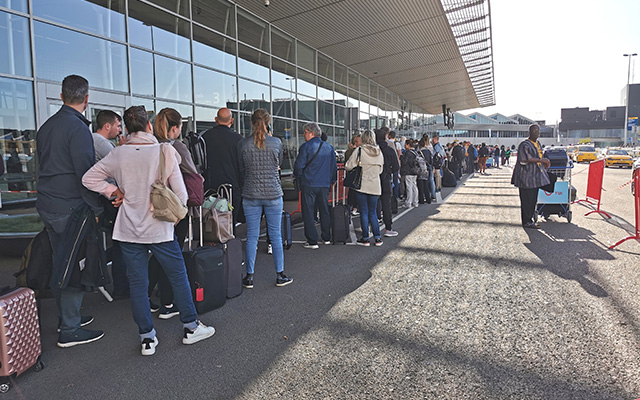
Tales of flight frustration
Some get lucky, most have a story to tell. This is mine:
As I pen this blog, I am in the Aspire Lounge in Schiphol. At the entrance, a note stated that the lounge had reduced opening times due of staff shortage. There are notes and warnings like this all over the airports in Europe – my job takes me through many of them.
While I’m sitting in the lounge, an executive is giving a tour to some students / potential new staff members – a sense of desperation is apparent! I queued for three hours just to pass through security at Schiphol, this has become the norm at other big airports in Europe too.
Staffing misery
The aviation sector, like so many other industries, is struggling to service demand due to a critical shortage of staff. This isn’t just a shortage of airline crews; it’s impacting a broad range of ground services at all levels. From airport operator functions such as security and baggage handling, to duty free shop assistants and restaurant staff.
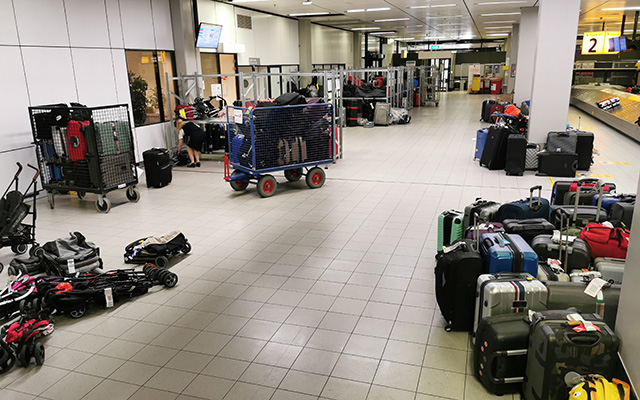
Although airports and airlines could see the warning signs months ago, it is very difficult to find the right staff.
It’s the same right across Europe; as pre-covid employees took up jobs in other industries, moved back to their home country or chose to take early retirement as the pandemic took hold, attracting them back has proven to be an enormous challenge.
Add to this the complexity of the aviation industry with its security implications; airside staff require specific government clearances which can take up to 12 months to process.
High level of demand
No one anticipated such a high level of bounce back. At the beginning of the pandemic, industry specialists predicted that European airport passenger numbers would only return to 2019 levels in 2028. As a result, an estimated 6.5 million people lost their job in the industry in 2019.
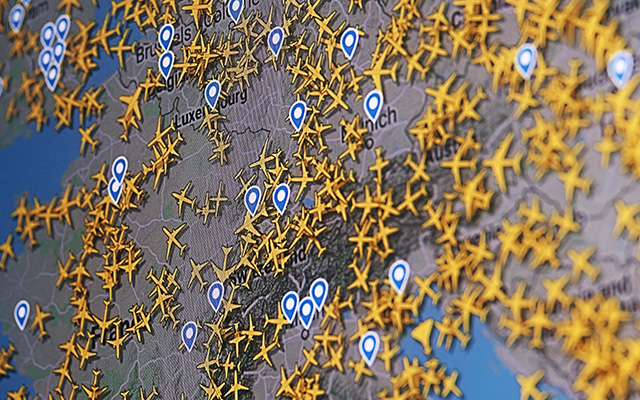
Eurocontrol and ACI Europe now predict that 2019 levels will be achieved again in 2024.
On a year-to-date basis, network traffic in 2022 stands at 79% of 2019 according to Eurocontrol. In June/ July, network traffic was at 86% of 2019 levels. This is an incredible recovery. Many people have money in their pocket and a hunger to get back out there having effectively lost 2 years of their lives. They made savings over lockdown, and they now want to spend it enjoying their freedom again.
It is expected that we will see further growth of 9% in 2025, and even 18% in 2026 compared to 2019.
European airports will have a capacity problem for many years to come.
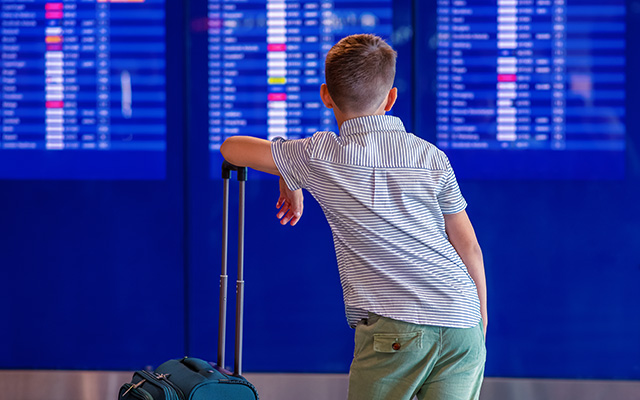
Looking to the future
Airports are finding innovative new ways to try to attract staff back in order to cater for this sudden yet sustained increase in demand. Heathrow for instance, which is looking to recruit 13,000 new employees, is already forging links with the next generation through its Heathrow Young Explorers initiative. Heathrow’s Local Recovery Plan is designed to offer learning experiences, financial incentives, and career inducements to boost its capacity.
Sufficient staffing levels and good customer service is just one element of delivering a high-quality passenger experience – every airport operator’s objective. The technology which supports airport operations is fundamental to achieving a smooth flow of passengers and reducing anxiety associated with travel. Flight Information Displays, wayfinding signage and check-in boards all help to guide passengers whilst dynamic advertising helps reduce perceived wait times.
Why Sharp/NEC?
In this current chaotic situation, what airport operators want and need is technology they can depend on. This is why Sharp/NEC is the trusted brand for airports. More than 220 international airports use our display technology throughout the terminal building. We guarantee smooth operation with sustainable and reliable long-life technology.
Safety in public spaces is paramount. Employing a metal chassis, Sharp/NEC dvLED and LCD Large Format Displays are fire-retardant, achieving excellent results in fire load testing. Walter Jünkering, CEO of Ben Hur GmbH, for a recent installation at Hamburg Airport, stated: ‘According to the fire safety experts, we’ve managed to completely prevent the LED installation from causing or accelerating a fire by using Sharp/NEC displays.’ Read the case study for Hamburg Airport.
Sharp/NEC is the only display manufacturer that can offer all the major display technologies including dvLED, LCD, and laser projection plus associated hardware and software solutions.
Our global network of airport specialists and FIDS Partners are dedicated and experienced, guaranteeing peace of mind for their airport customers, at least as far as their technology provision is concerned.
Let’s have a chat. I live and breathe visual technology for the transportation sector and global customer support, and I’d love to talk more about any questions or thoughts you may have. You can reach me on LinkedIn.
What are the current technology trends in the aviation sector?
Upgrading to dvLED
Airport terminals have been closed for months, some for a year or even longer. As they welcome back ever-increasing numbers of passengers, it’s time for airports to update their appearance in line with the expectations of today’s tech-savvy next generation of travelers. dvLED technology offers a compelling list of advantages, driving the replacement of legacy LCD videowalls. 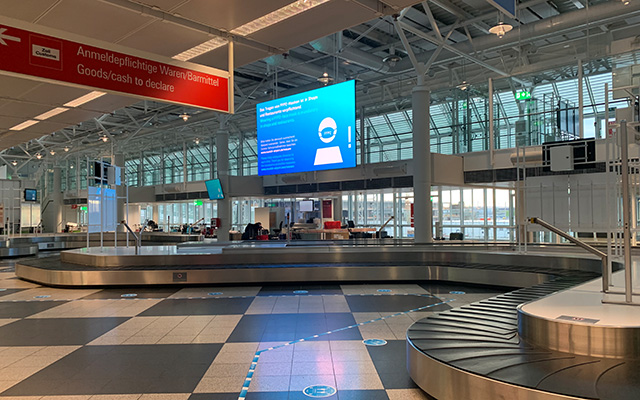 High bright with deep contrasts, unlimited scalability and customisable flexibility, and no distracting bezels nor screen reflections. When you want to make an impression, dvLED is Big, Bold and Bright.
High bright with deep contrasts, unlimited scalability and customisable flexibility, and no distracting bezels nor screen reflections. When you want to make an impression, dvLED is Big, Bold and Bright.
It’s ideal for FIDS of any size and shape, easily readable even in the brightest glass atrium terminal buildings. As an advertising medium, attracting eyeballs from across the terminal building, dvLED presents branding content to perfection, appealing to advertisers willing to pay a premium for high quality – a valuable source of revenue for airport operators.
An even more remarkable advantage of dvLED is its long-life expectancy. You can anticipate up to 100,000 hours life span from your Sharp/NEC wall, that’s 10 years based on average use which is remarkable.
Read the case study from Munich Airport which saw a recent installation in the Terminal 1 baggage hall. The dvLED surface measuring ~4.8m wide by ~2.7m high is suspended from the ceiling. Delivering 1,000 cd/m² brightness, even in the brightly lit space, passengers right across the reclaim hall get a clear view of the FullHD image.
Static to dynamic transition
Many airports are replacing traditional static wayfinding signage with multiuse digital displays which can be instantly updated to provide relevant passenger information, revenue generating advertising or emergency messaging.
Wayfinding signage can adapt according to changing situations, from indicating a change in boarding gate to providing guidance in different languages according to the flight destination or origination. Through the intelligent use of AI-enabled CMS systems, airport operators can relieve the pressure on ground crew by providing passenger information at the right place, at the right time.
With secure integrated computing devices based on Intel OPS, Intel SDM-L and Raspberry Pi 4.0, Sharp/NEC Displays provide smart functionality to support the most complex system networks throughout the terminal building, and beyond.
We partner with the industry’s leading FIDS suppliers who favour our robust, secure, and scalable computing technology.
Hybrid working is here to stay
An area of airport operations which is often overlooked is the back office. An airport located in the heart of Europe recently invested in dozens of LCD Large Format Displays for meeting rooms; interactive solutions and projection for staff spaces, and a dvLED surface in a boardroom, all fulfilled by Sharp/NEC.
Flexible, hybrid working is important in the post-covid era. Staff often work several days a week from home but need to be included in meetings at the office. Sharp/NEC is a trusted brand in the corporate space, with collaborative video conferencing solutions and desktop displays purpose-designed for office and home-office use.
Central to Sharp/NEC’s offering is our partnership with key providers in the UC space ensuring our hardware is proven to provide a high-quality user experience when integrated with other solutions.
Read more about the challenges surrounding hybrid working.

Consolidated airport control operations
Airport operators are moving towards consolidating their control room operations, combining smaller control rooms into one big one, enabling all services and departments to liaise easily and directly. Functions including police, border control, narcotics, fire department, even vehicle asset management, can feed into and have access to data for immediate, informed and joined-up decision making.
dvLED technology is favoured for its scalability, filling a wall with digital tiles to maximise the Common Operational Overview in control room environments. Even curved features are possible ensuring perfect viewing angles, whilst fine pixel pitches support high resolution detail at any viewing distance meaning all operators get the best possible visual experience wherever they are located in the room. Hiperwall’s IP-distributed software brings together the entire system providing endless flexibility to manage unlimited source inputs to be visualised on any number of output displays.
Environmental accountability
An airport’s ground-based operations are subject to local government carbon neutrality targets and operators are choosing to partner with suppliers which can help them achieve their sustainability goals. Improving efficiencies and reducing waste not only benefits the planet but significantly reduce an airport’s operational costs.

Sharp/NEC’s high-quality products offer extended product lifetimes, deferring replacement, and therefore waste, over a longer time frame. Durable product design also supports reuse, repair and recycle initiatives, further extending the product lifecycle, whilst helping to reduce energy consumption. This practical approach has been commended with a Green Signage Award.
‘Sharp/NEC is by far the most sustainable visual solutions provider in the industry,’ Florian Rotberg, Managing Director for Invidis Consulting.
Read more about how quality and sustainability go hand-in-hand.
Find out more about Sharp/NEC’s dedicated products and services for the transportation sector
